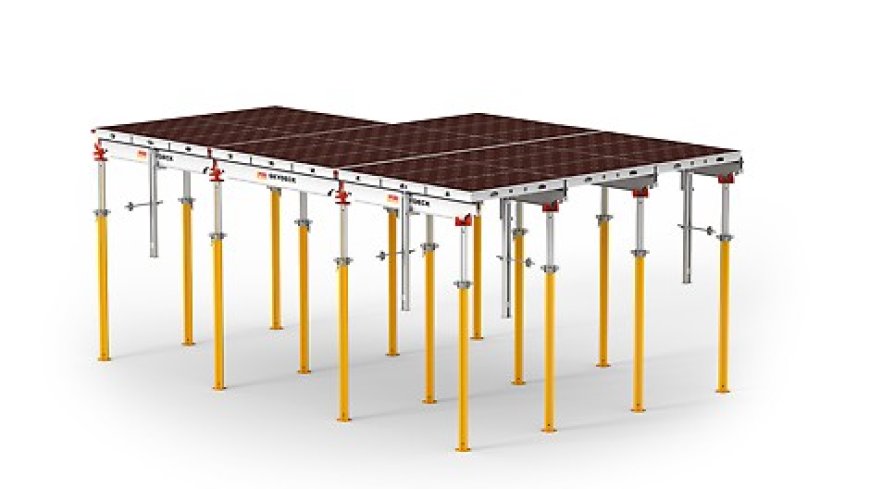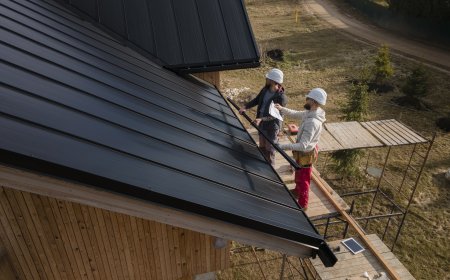Slab Formwork System: The Backbone of Efficient Concrete Construction
The Slab Formwork System is a cornerstone of efficient, reliable, and cost-effective concrete construction. With advancements in Sheet Metal Fabrication Processes and innovations like the Slab Tableform system, the industry is witnessing faster build times, improved quality, and enhanced safety.

In modern construction, formwork plays a pivotal role in shaping and supporting concrete structures until they gain adequate strength. Among the various systems used today, the Slab Formwork System has emerged as one of the most efficient, durable, and cost-effective solutions, especially for large-scale commercial and residential projects.
This system not only enhances construction speed but also ensures precision and safety at every stage. In this article, we will explore the intricacies of slab formwork, its advantages, components, and how innovations such as the Slab Tableform system and the Sheet Metal Fabrication Process contribute to its superior performance.
What is a Slab Formwork System?
A Slab Formwork System is a temporary mold used to hold and shape freshly poured concrete until it cures and hardens. It consists of a set of pre-engineered and reusable panels, supports, props, and frames designed to create horizontal concrete slabs with high accuracy and surface finish.
This system is suitable for varying slab thicknesses, complex architectural requirements, and different load capacities. It ensures consistency in quality, reduces manual errors, and minimizes the time required for construction.
Importance of Slab Formwork in Construction
The significance of a slab formwork system cannot be overstated in modern-day construction. Here are a few reasons why it is widely preferred:
· Speed and Efficiency: Pre-fabricated components reduce on-site labor and setup time.
· Cost Savings: Reusability of parts lowers the overall project cost.
· Quality Assurance: Provides smooth finishes and dimensional accuracy.
· Safety Compliance: Ensures safe working platforms during concrete pouring and setting.
Moreover, when integrated with engineered systems like the Slab Tableform system, productivity and site safety increase exponentially.
Key Components of a Slab Formwork System
The slab formwork system typically comprises:
1. Panels or Decking
These are horizontal surfaces made from steel, aluminum, or plywood that directly support the concrete.
2. Beams and Girders
Placed beneath the panels, they transfer the concrete load to the vertical supports.
3. Props or Shoring Towers
These vertical supports hold the formwork in position and bear the weight of the concrete slab during setting.
4. Drop Heads or Quick Strip Heads
Used for early stripping of panels while keeping props in place for further support.
5. Safety Accessories
Includes handrails, edge protection, and working platforms to ensure operator safety.
Each component undergoes a Sheet Metal Fabrication Process, making the formwork durable, lightweight, and easy to handle.
Slab Tableform System: An Innovative Approach
The Slab Tableform system is a specialized formwork setup designed to cover large slab areas quickly and efficiently. It consists of pre-assembled tables or modules that can be lifted and relocated using cranes. This method reduces erection and dismantling times significantly.
Benefits of the Slab Tableform System:
· Fast Assembly and Dismantling: Ideal for repetitive slab constructions.
· Reduced Labor: Minimal manpower is needed for setup and removal.
· Improved Surface Finish: Ensures smooth and uniform slab surfaces.
· Versatile Application: Adaptable to various slab geometries and thicknesses.
This system is highly beneficial in high-rise buildings, malls, parking structures, and industrial facilities where slab repetition is frequent.
Role of Sheet Metal Fabrication Process in Formwork Systems
The Sheet Metal Fabrication Process is fundamental in manufacturing slab formwork components. This process involves cutting, bending, and assembling sheet metal to create parts like panels, frames, and brackets with high precision.
Major Fabrication Techniques Used:
· Laser Cutting: For accurate and smooth edge finishes.
· Welding and Riveting: To join components securely.
· CNC Bending: To achieve custom angles and designs.
· Powder Coating or Galvanizing: For corrosion resistance and enhanced durability.
Using advanced sheet metal fabrication techniques ensures the formwork components are lightweight, robust, and capable of withstanding multiple reuses without deformation or compromise in quality.
Types of Slab Formwork Systems
Depending on project requirements, the slab formwork system can be categorized into the following types:
1. Traditional Timber Formwork
Constructed on-site using wooden planks, it’s labor-intensive but flexible for intricate designs.
2. Modular Panel Formwork
Prefabricated panels made of steel or aluminum that are quick to assemble and highly reusable.
3. Tableform or Flying Formwork
Large tables are assembled and lifted as units, significantly reducing construction time.
4. Tunnel Formwork
Combines slab and wall forming in one system, used in repetitive layouts such as hotels and dormitories.
For modern infrastructure projects, the Slab Tableform system and modular panel systems are preferred due to their speed and precision.
Advantages of Using a Slab Formwork System
Integrating a slab formwork system into your construction project delivers numerous advantages:
· Time Savings: Faster slab cycles lead to shorter project timelines.
· Material Efficiency: Reduces wastage through precision manufacturing.
· Structural Accuracy: Maintains uniform slab thickness and level.
· Reduced Labor Costs: Prefabricated systems require fewer workers.
· Environmental Benefits: Reusability minimizes the ecological footprint.
Coupling these advantages with cutting-edge sheet metal fabrication processes ensures that formwork systems meet global quality and safety standards.
Applications of Slab Formwork Systems
Slab formwork systems are versatile and used across various sectors, including:
· Residential Buildings: High-rise towers and apartments.
· Commercial Spaces: Office complexes, malls, and hotels.
· Industrial Units: Warehouses, factories, and assembly plants.
· Infrastructure Projects: Bridges, flyovers, and parking structures.
These systems are especially beneficial in projects where slab uniformity and repetition are critical, enhancing both speed and precision.
Why Choose Biiformtek for Slab Formwork Systems?
At Biiformtek, we are at the forefront of delivering high-performance Slab Formwork Systems crafted through precision engineering and advanced Sheet Metal Fabrication Processes. Our systems are:
· Designed for maximum durability and reusability.
· Backed by customization options to suit diverse project needs.
· Compatible with modern construction techniques like the Slab Tableform system.
· Compliant with global safety and quality standards.
From design to delivery, our experienced team ensures seamless support and guidance throughout your project lifecycle.
Conclusion
The Slab Formwork System is a cornerstone of efficient, reliable, and cost-effective concrete construction. With advancements in Sheet Metal Fabrication Processes and innovations like the Slab Tableform system, the industry is witnessing faster build times, improved quality, and enhanced safety.
Whether you're planning a multi-storey building or an industrial structure, investing in a high-quality slab formwork system from trusted providers like Biiformtek ensures a solid foundation for your success.












































